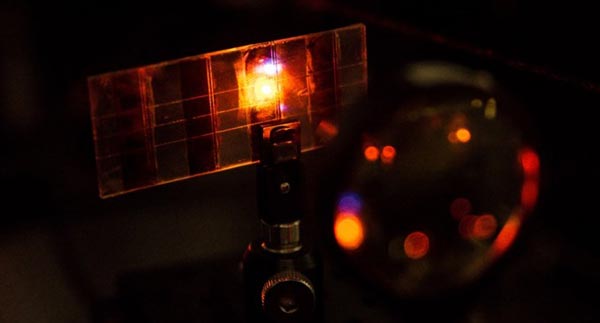Researchers from Nanyang Technological University (NTU) in Singapore have developed a new solar cell material that is capable of emitting light whilst converting sunlight into energy. The solar cells are based on a material called Perovskite which glows when electricity passes through them and can be customised to emit different colours.
A display and solar panel in one
This discovery is said to pave the way for a wide range of applications such as screens for mobile devices or large outdoor displays that can recharge their own batteries when out in daylight.
"What we have discovered is that because it is a high quality material, and very durable under light exposure, it can capture light particles and convert them to electricity, or vice versa," said Asst Prof Sum, a Singaporean scientist at NTU’s School of Physical and Mathematical Sciences (SPMS).

Sum mentions that the discovery of the material and its composition was almost by accident as he instructed his student to shine a laser beam on the Perovskite solar cell material being developed at the time when the solar cell started glowing under the light. This finding has never been observed in any other photovoltaic material before. Furthermore, "by tuning the composition of the material, we can make it emit a wide range of colours, which also makes it suitable as a light emitting device, such as flat screen displays."
Tinted solar panel windows
The team has also identified several factors favouring the new material including its durability, its "tunability" which refers to the range of colours it can achieve, its translucency (which may lead to building-integrated solar) and the emission of light in laser form providing a whole new range of applications including devices for light detection and control.
"It can be used as tinted glass to replace current windows, yet it is able to generate electricity from sunlight. The fact that it can also emit light makes it useful as light decorations or displays for the facades of shopping malls and offices," another researcher involved in the project, Assistant Professor Nripan Mathews, said.
Cheaper too
The manufacturing process involving the relatively inexpensive mineral, composed of calcium titanate, also means that the Perovskite-based material is five times cheaper than conventional silicon-based photovoltaic cells.
“Such a versatile yet low-cost material would be a boon for green buildings. Since we are already working on the scaling up of these materials for large-scale solar cells, it is pretty straightforward to modify the procedures to fabricate light emitting devices as well,” concluded Dr Mathews.













